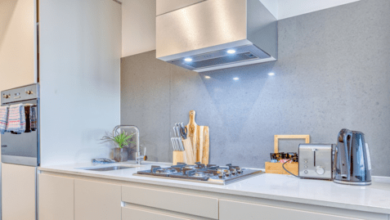A Guide to Basement Wall Finishing
Introduction
Finishing the walls of your basement is a transformative step in enhancing both the aesthetics and functionality of the space. Whether you’re planning a cozy family room, a home office, or a recreational area, a well-finished basement contributes significantly to your home’s overall appeal. In this guide, we’ll explore the step-by-step process of finishing basement walls, providing valuable insights and tips to help you achieve a polished and inviting space.
Assessment and Planning
Before diving into the finishing process, assess the current state of your basement walls. Look for any signs of moisture, cracks, or structural issues. Addressing these concerns at the outset ensures a solid foundation for your finishing project. Plan the layout of the finished space, considering the placement of electrical outlets, lighting, and any additional features you envision.
Moisture Control
Basements are prone to moisture, which can lead to mold and mildew issues. Install a moisture barrier on the walls to prevent water infiltration. This may involve applying a waterproofing paint or using moisture-resistant insulation materials. Adequate moisture control is fundamental to the longevity of your finished walls.
Insulation Installation
Insulating basement walls is crucial for temperature regulation and energy efficiency. Choose insulation materials suitable for basements, such as rigid foam boards or spray foam insulation. Proper insulation not only enhances comfort but also helps in noise reduction.
Framing the Walls
Create a framework for your walls using treated lumber. This framing provides support for the finished wall surface and allows for the installation of insulation and wiring. Ensure that the framing is straight and level, as it forms the skeleton of your finished basement.
Electrical Wiring
Plan the electrical layout based on the intended use of the space. Install wiring for outlets, lighting fixtures, and any other electrical components. Consult with a licensed electrician to ensure compliance with local building codes and safety standards.
Drywall Installation
Drywall is a standard choice for finishing basement walls. Install drywall panels on the framed walls, using screws to secure them in place. Be mindful of seams and joints, applying joint compound and tape to create a smooth and seamless surface. Sand the drywall to achieve a uniform texture.
Priming and Painting
Once the drywall is in place and has been properly sanded, prime the walls to create a suitable surface for paint. Choose paint colors that complement the overall design and purpose of the space. Consider lighter shades to brighten the basement and create an open feel.
Wall Covering Options
While drywall is a popular choice, consider alternative wall coverings to add texture and visual interest. Options include wood paneling, wainscoting, or even peel-and-stick wallpaper. These choices can impart a unique character to your finished basement.
Baseboard and Trim Installation
Complete the look of your finished walls by installing baseboards and trim. These finishing touches not only enhance the aesthetic appeal but also cover any gaps or imperfections. Choose materials and styles that complement the overall design of the space.
Flooring Considerations
Although this guide focuses on walls, flooring is a crucial aspect of finishing a basement. Consider options such as laminate, vinyl, or carpet tiles that are suitable for below-grade spaces. Ensure proper insulation and moisture resistance for longevity.
Lighting Solutions
Basements often lack natural light, so thoughtful lighting solutions are essential. Incorporate a mix of ambient, task, and accent lighting to create a well-lit and inviting atmosphere. Consider recessed lighting, wall sconces, or floor lamps based on your design preferences.
Furniture and Decor
Once the walls are finished, bring the space to life with carefully selected furniture and decor. Choose furnishings that fit the scale of the room and contribute to the functionality of the space. Personalize the area with artwork, rugs, and accessories.
Conclusion
Finishing your basement walls is a rewarding home improvement project that significantly expands your living space. From addressing moisture concerns to selecting the right wall coverings, each step plays a crucial role in creating a comfortable and appealing environment. Whether you’re creating a new living room, a home gym, or a play area for the family, a well-finished basement adds value to your home and enhances your quality of life.


